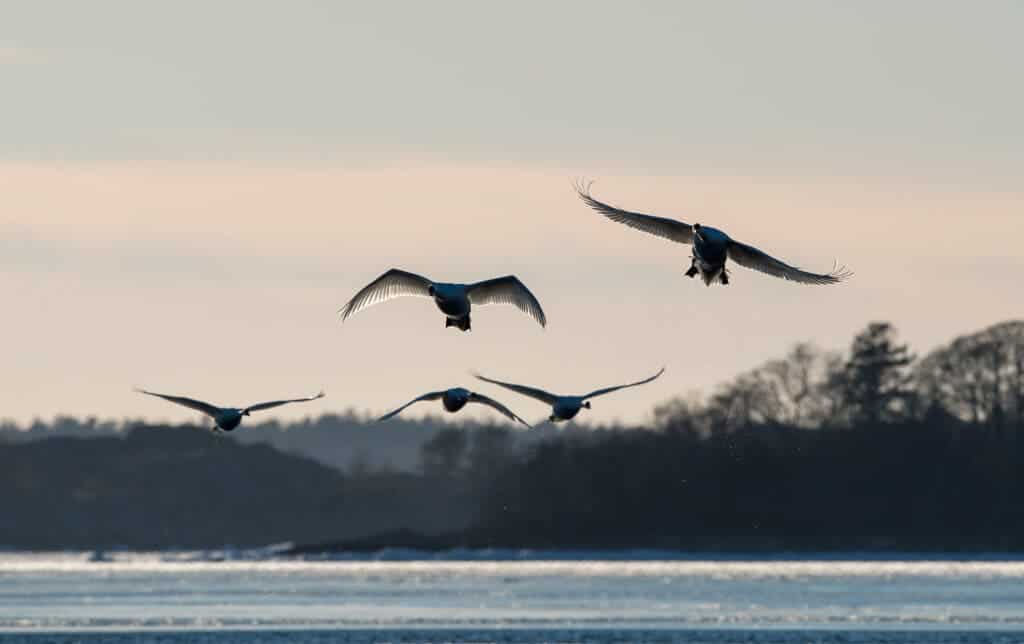It seems trivial for an airplane, but flying non-stop for hundreds of kilometers across the open ocean is actually tricky, especially for land birds. In a new study, researchers have found how they are able to pull this off. It’s all about using the wind and uplift to lower the energy costs during the flight and adapting migratory routes.

We know birds fly in groups between continents and across the oceans as they seek food, habitat or more hospitable weather conditions – a seasonal movement known as migration. At least 4,000 species, or 40% of the total number of birds in the world, are estimated to be regular migrants. Even some of the birds in your garden could well be migrants.
During long-distance migrations, birds can face many challenges that are different from what they experience during the rest of the year. This is especially true for land birds that have to fly over the open sea. They can’t rest or feed on water like seabirds, so their migration has to be non-stop – bringing a whole set of issues for them.
Bird-watchers used to think that land birds could only cope with short sea crossings of less than 100 kilometers, avoiding going into the open ocean. Nevertheless, recent studies showed this isn’t actually the case, with many land birds registered in GPS data flying for thousands of kilometers on the open ocean as part of their annual migration.
Understanding how land bids are able to pull this off has been a big question for scientists. Flapping their wings requires a lot of energy, and doing this continuously over long distances wouldn’t be possible. Studies suggested that a single species of bird, the osprey, uses rising air thermals, known as uplift, as well as horizontal winds to save energy and fly over the open sea.
In a new study, German researchers from the Max Planck Institute and the University of Konstanz found that the atmosphere plays a key role in facilitating migration over the open sea for many land birds. According to the researchers, many migrant birds use both wind and uplift to reduce energy costs during the flight, in some cases changing their routes based on atmospheric conditions.
“Until recently, uplift was assumed to be weak or absent over the sea surface. We show that is not the case,” lead author Elham Nourani said in a statement. “Instead, we find that migratory birds adjust their flight routes to benefit from the best wind and uplift conditions when they fly over the sea. This helps them sustain flight for hundreds of kilometers.”
Understanding land birds
For their study, the researchers collected data for five raptor species that perform long sea-crossing journeys (longer than 30 kilometers). These are the Oriental honey buzzard (Pernis ptilorhynchus), the grey-faced buzzard (Butastur indicus), the osprey (Pandion haliaetus), the peregrine falcon (Falco peregrinus), and Eleonora’s falcon (F. eleonorae).
These differ in size, morphology, and stop-over strategies and their overall dependence on soaring flight to cover long distances. The researchers looked at sea-crossing behavior during migration to ensure a common flight purpose among all species and individuals in the study. They only included adults, as they chose their route based on experience.
The findings confirmed that birds maximize tail wind support to reduce the time and energy required to complete their journeys. But the researchers found widespread use of uplift, which makes sea crossing less demanding. The fact that birds avoided areas with high long-term variability in wind support when flying over water, thereby reducing uncertainty in the energy needed for migration, validates this hypothesis.
“Our findings show that many land birds are dependent on atmospheric support to complete their migrations over the open sea, indicating their vulnerability to any changes to the Earth’s atmospheric circulation patterns,” Nourani said. “Collaborative studies like this are important to unravel general patterns about how migratory birds depend on the weather patterns.”
The study was published in the journal Proceedings of the Royal Society B.


